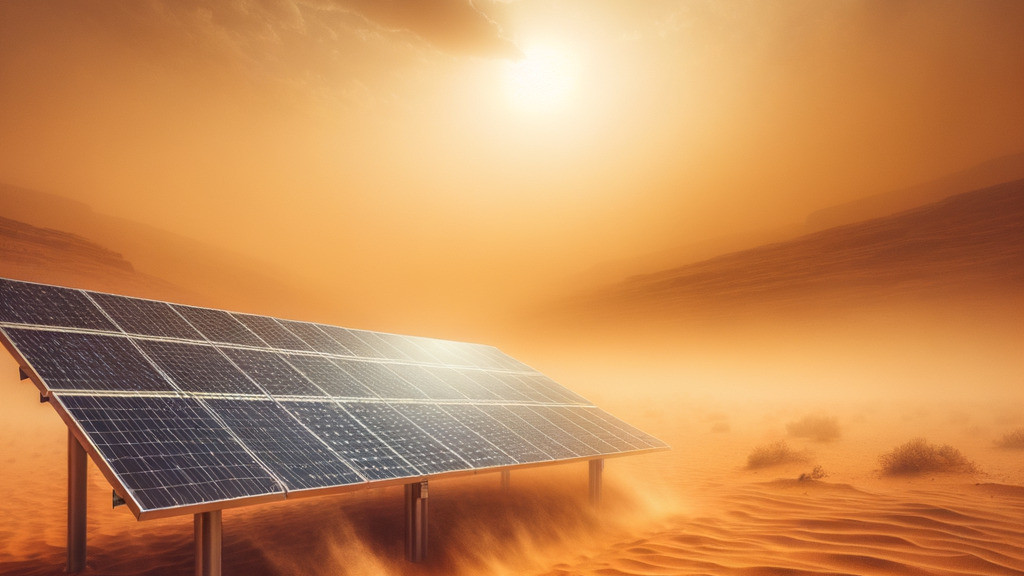Saharan dust, a natural atmospheric phenomenon, involves the movement of mineral-rich sand and dust particles from the Sahara Desert across vast geographical expanses. This dust is transported by wind currents over the Mediterranean and into Europe. While this phenomenon is common and can occur up to 15 times a year, its implications for solar energy production have recently come under scrutiny, particularly following a significant event around Easter 2024.

The Journey of Saharan Dust
The transport of Saharan dust involves complex meteorological processes. Dust particles are uplifted by strong wind currents in the Sahara, carried across the Mediterranean, and deposited in Europe. These particles typically accumulate at an altitude of about 2,000 metres but can descend to ground level under certain conditions, as observed during the intense event in March 2024. Such occurrences are influenced by various factors including wind speed, atmospheric stability, and air temperature above the Mediterranean.
Economic and Environmental Consequences
The presence of Saharan dust in Germany has direct and impactful consequences on solar energy production. For instance, during the recent event, solar power output in Baden-Württemberg (TransnetBW) was expected to peak at 3,500 megawatts but fell to just 1,600 megawatts due to dust accumulation on solar panels. This reduction not only affects the efficiency of solar energy generation but also prompts the use of backup power sources, often fossil fuels, which can lead to increased electricity costs and environmental concerns.
The reduction in solar power output necessitates a re-evaluation of energy strategies and highlights the need for improved forecasting and adaptive management to mitigate the impacts. The German Meteorological Service (DWD) has developed new models to better predict these events and their potential impact on renewable energy sources.
Adaptive Strategies and Future Considerations
To combat the challenges posed by Saharan dust, energy operators might consider regular maintenance schedules for solar panels to ensure they remain clean and efficient. Furthermore, the development of more sophisticated forecasting models could better prepare the energy sector for the potential decrease in solar output during such events.
The ongoing challenge of Saharan dust underscores the need for robust infrastructure and innovative solutions to maintain energy efficiency and reliability. As these dust events may increase in frequency due to changing global weather patterns, proactive measures and adaptive strategies will be essential. Additionally, integrating advanced energy storage systems, like those offered by CLOU, can provide a buffer, ensuring a stable energy supply even when solar output fluctuates. This approach not only enhances the resilience of the energy grid but also secures a continuous power supply, essential for meeting the demands of modern energy consumers.
Takeaway
The phenomenon of Saharan dust, while natural, poses significant challenges for solar energy production in Europe. Understanding, predicting, and mitigating the impacts of such events are crucial for maintaining the efficiency of solar power operations and ensuring energy stability. With advanced forecasting techniques and strategic management, Distribution System Operators (DSOs) are better able to integrate renewable energy sources, even when faced with environmental factors like Saharan dust.
If you have any inquiries or need further information about our energy storage solutions, please do not hesitate to reach out to us. We are here to assist you and welcome your valuable thoughts and comments.
Until then, keep shining bright like a solar panel on a sunny day—just be sure to dust it off once in a while!






All comments are moderated before being published. Inappropriate or off-topic comments may not be approved.